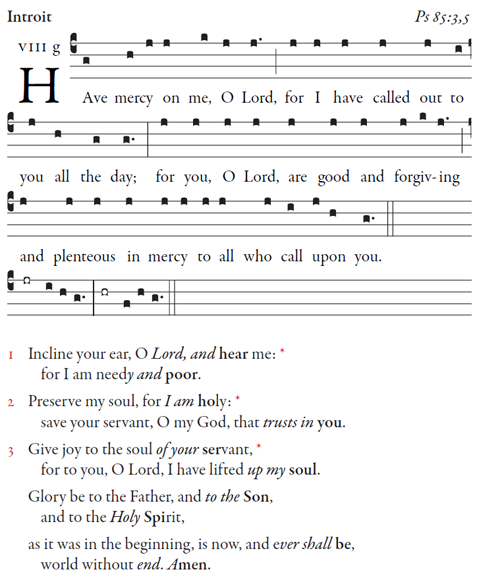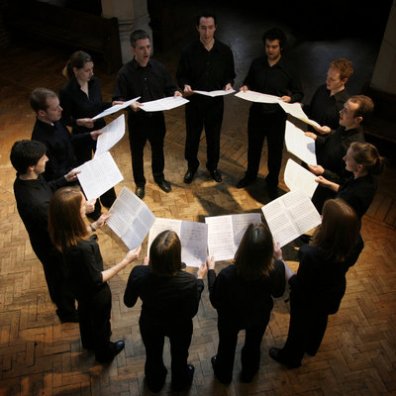This is the time of year where music directors and church musicians are returning home from summer conferences, colloquia, seminars, retreats, possibly trips abroad, or maybe just summer vacations. Over the next few weeks we are planning out the year that lies ahead, recruiting choir members, choosing repertoire, organizing and preparing ourselves for the exhausting stretch of rehearsals and liturgies, especially the privileged seasons that will be here before we know it. Although this time of year is comparatively very slow, it brings with it a certain anxiety because we know that our strategizing and big-picture thinking now may very well determine the course of the coming year.
If your parish is like mine, you might be considering what subtle or possibly profound additions, subtractions, or adjustments you can make that will help steer your parish toward the sacred and more closely toward the musical and liturgical ideals that are given to us by the Church. This might be the creation of a schola that begins to explore the Church’s musical treasures, an implementation of the basic Gregorian ordinary, more singing on the part of the priest and the congregation in dialogue with him, a weeding out of problematic repertoire, it surely involves a thorough agenda of catechesis, and probably also of continued personal study.
And it also is likely to involve some sort of introduction of your parish to the proper of the Mass–perhaps specifically the processional antiphons which form an integral part of the liturgy and which are ideally supposed to be sung at the Entrance, Offertory and Communion.
At this point in history the desire to begin singing the proper chants, or at least the Introit and Communion, presents some very interesting challenges. There are several resources that are now available, all of varying degrees of difficulty, and many if not most of them available to you freely. Of course there is the Graduale Romanum, the Roman Rite’s book for the choir, there are Rossini propers (very popular before Vatican II), there are simpler chants of the Graduale Simplex, there are the polyphonic and choral propers found at CPDL, there are collections of English chant like Bruce Ford’s The American Gradual, the Palmer-Burgess Gradual, The Anglican Use Gradual, Fr. Samuel Weber’s work, Fr. Columba Kelly’s work, the Simple Choral Gradual, The Arbogast collection, Tietze’s Hymn Introits for the Church Year, there are 101 different ways to sing antiphons to psalm tones, falsi bordoni, Anglican chant, you can write your own settings, there even funky collections from publishers like the Liturgical Press (if you want to go there).
I’m sure that I’m missing several different methods of singing the propers in this list. But the list will continue to grow with projects like the the Graduale Parvum, the St. Meinrad Gradual, the St. Louis Gradual, the Mundelein Gradual, and surely many more that will surface in the coming years.
That many of these collections are free for parishes to use is fantastic and this big disorganized mess of options for the singing of the propers is indeed a very good problem to have! But there is an undoubted trepidation and anxiety that overcomes the parish music director, volunteer schola director, underpaid organist, campus ministry director, or pastor who begins to browse through these options with limited time, an uncertainty about what he or she should really do, and an impending “season kick-off” just a few weeks away.
Depending on the resource or resources that you choose, there are the challenges of sometimes adding psalm verses, of copy and pasting antiphons out of books into usable resources, of adding translations, of doing musical typesetting, of creating worship aids, of substituting a setting when others seem inappropriate. And you need to create a strategy, and layout a game plan for providing these resources for your musicians every week, teaching them how to sing them, all the while fending off angry letters and offensive outbursts from choir members who can’t understand why we can’t sing On Eagles Wings anymore. And there is the possibility that your choice in strategy ended up being the wrong one and you have to shift strategy mid-stream.
You may have to introduce your singers to new notational styles, there may be a style of language in the musical setting that is difficult for your parish to handle at the moment, you might end up biting off more than you can chew and end up waxing an Introit one Sunday morning, furthering your own frustration and the confidence of your singers and congregation. These potential situations are can drive a young and enthusiastic music director crazy (and I do speak from experience!) and missteps in strategy on the path to sacred and normative liturgy can seriously hinder or altogether stop progress.
It is certainly much easier to choose four familiar hymns or songs from the Music Issue or the Gather book and call it a day, and this is surely what many people who really want to sing the Mass end up doing because the whole world of the propers right now is a sort of huge disorganized mess. People like myself can get by just fine, but we are very good with computers, are very web savvy, and have an enthusiasm about the propers which compels us through grueling hours of sleepless nights of preparing organized and useable resources for our choirs.
Perhaps I am the only person who experiences these anxieties, I don’t know. I would appreciate hearing feedback from others who deal with similar situations in the comment box!
This post is titled “New Beginnings” and there was a reason for that–there is another “beginning” that is approaching us, and it is a little more than a year away, and this is the implementation of the new English translation of the Roman Missal. This means that not only congregational responses, collects and the Eucharistic prayer will be changing, but also the Ordinary of the Mass, the translations of the antiphons that are found in the Missal (for those who sing these antiphons in lieu of the differing Graduale antiphons), and the official translation of the psalms will also be changing (the Revised Grail Psalter). The good news for some is that “alius cantus aptus” (another suitable song) saves the day in regard to “official translations”, but many do see the great value in singing “official” and “approved” translations where possible. This certainly applies to the texts of the Missal, the Lectionary (Responsorial Psalm and Gospel Verse), and to the psalm verses for the processional propers.
So some people may be in a situation where they have only begun to introduce propers, or they would like to begin to do so throughout the coming year, but they are frustrated to discover that all of their labors in crafting a suitable resource for the current needs of their parish will be superseded by new text translations, new psalm translations, and new musical settings in about a years time. I know of many who are putting off the introduction of propers into their parishes until the safe arrival of the new translation for these and other reasons. This seems to be a very sad reality, but for many it is the reality.
What’s the answer, we might ask? Well, conventional wisdom might tell us that in a few years when the new translations stabilize we will probably have about 10 or more new hard bound books to choose from that offer a “complete” resource. The problem that arises, though, is that one might commit to a particular collection, but then find themselves locked into it because of their investment, and they are not able to introduce more sophisticated, or varied settings of the propers, “climbing the ladder toward the Graduale Romanum” so to speak, without having 3 or 4 books in the hand of each singer. Making copies or printing off varied settings might lead some to a certain case of “music paper madness“.
As a solution, many have discussed ways of organizing the existing online resources in some kind of website or database, but much of what has happened so far is a small index of links and the situation is not much improved.
Well, (and I do have a point here) I am glad to say that a group of people who see the same need and have diverse solutions to the problem, and the many challenges encountered in the current liturgical project have come together and are coming together and are joining forces to create a solution that is greater than the sum of its parts, and it is being called the Sacred Music Project.
Most of what the Sacred Music Project actually is exists currently only in the theoretical realm–in conversations between like minds. A very simple website does exist, but it is essentially a means of making the English chant work of Fr. Columba Kelly, OSB, available to the world. Fr. Kelly has encouraged the project on and remains committed to it with his existing and forthcoming English chant compositions. A professional computer scientist has tackled the question of how to make sacred music actually work in the digital age and is now developing the first stage of a custom web application that will become a “complete parish resource” of sacred music materials, published in the Creative Commons or Public Domain, of instructional materials that assist people in using the resources, in catechetical resources that invite parish musicians into the Spirit of the Liturgy, of recordings and demonstrations that help train musicians in singing a repertoire that may be largely unfamiliar to them.
So the Sacred Music Project is essentially seeking to harness the cumulative efforts of the many who have advanced the cause of sacred music and is working to help it make sense in the world of Web 2.0, of social networking. This may seem all very esoteric, and maybe it is, but we really think that we have something substantial here, and we think that it can easily and effortlessly put truly sacred and liturgical music in the hands, on the music stands (and on the iPhones and iPads) of average parish musicians and can offer them a path toward the sacred and toward the Church’s musical treasures and normative musical practices.
We also have prolific typesetters, designers, composers, scholars, theologians, and visionary thinkers on board and beginning to work together. The results of this sort of collaboration could be great indeed.
We are indeed on the cusp of many new beginnings and it is all very exciting.
If you would like to hear more please stay tuned for more Chant Café posts on the Sacred Music Project, visit the SMP Blog for more info and future updates, or contact me if you would like to know more or if you would like to get involved in some way.
Maybe we can help promote an “authentic updating of sacred music according to the great lineage of the past”, per Pope Benedict’s request, while we’re at it. Let’s see!















